Two Sticks and a Ball of String
After the election, I spent the day knitting. The product was yet another disaster, but this meditative exercise calmed me down considerably.
While walking with a friend along a neighborhood street, we came upon a Samoyed sitting at the end of a long driveway. Of course, we stopped to pay tribute to this gorgeous dog with pats and ruffling through its deep coat. My hands came out covered in thick wool. Thoughts of my mother-in-law sprung to mind.
For a year, she brushed her Samoyed, collecting his wool in a bag. When the bag was full, she gave it to a spinner, who produced the softest, most luxurious yarn I'd ever seen. With this memory in mind, I plunged my hands into the dog's fur for more.
"OMG," my friend exclaimed, "he's looking happier already. Look at him." Indeed, the dog's mouth gaped in euphoric glee as my fingers combed hunks of hair from his coat.


Twisting the dog hair into a fine string, I demonstrated how people have been using fibers of all kinds to make nets, baskets, and clothing. So far, archeologists mark spinning with drop spindles at 40,000 years. Using a wheel and a loom is only a couple hundred years old.
Drop spindles are still used by masters of this mystifying skill. Mystifying to me, anyway. I watched a woman in my daughter's class roll a spindle along her thigh to form beautiful yarn with no unspun sections, slubs, or twisted kinks. It was perfect. I was in awe.

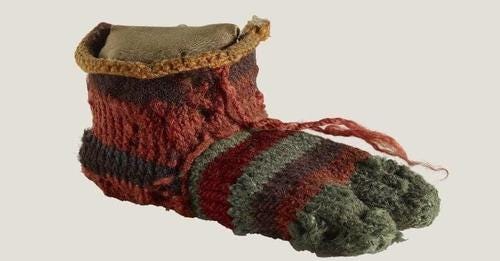
One spinning teacher told her students to toss their spindles over the balcony railing. If it reached the ground without breaking the thread, they passed their final exam. A visitor attending our weekly knitting circle pulled out a spindle, no bigger than a baby's pacifier, and showed us how she spun yarn while … oh, waiting for a bus. She could ply her art without anyone noticing.
I often wonder about the ancestor who plucked hair from a branch, twisted it into string, picked up a couple of sticks, and figured out how to make those first stitches. From then on, scarves, hats, socks, and sweaters with clan symbols replaced animal skins. My techie husband has told me, "I can't believe how you do THAT! It's magic." Well, it is, yet it isn't really. Magic to me is weaving grass, willows, and even pine needles into baskets. But I digress … slightly.
While Hollywood and social media mock these activities, millions of women AND men indulge in yarn. The Internet is filled with pattern websites and videos teaching various skills. Yarn shops invite customers to drop in to discuss problems with their projects. Meeting once a week, some knitting groups form rituals. The one I attend collects a dollar from everyone then draws a name from a pot named Purl. The winner receives the cash to spend at the shop. I've learned so much from this group. While I'm not confident enough to make advanced projects, these ladies have widened my horizons with their expertise as well as their camaraderie.



My favorite project is hats. Most of my work has gone to a shawl ministry. This allows me to experiment with color work without knowing who receives it. That's an issue for anyone who makes a garment for a loved one. Will they wear it or will it land on the closet floor? I thought this was just my problem until an expert knitter became discouraged with her family's reception of her gifts.
"I've never seen them wearing them," she moaned, shaking her head. "Why do I even bother?" She finally decided not to knit any more after seeing one of her fancy sweaters shrunken and matted by the dryer.
One time, though, I was rewarded after knitting a stuffed penguin for my grandson. My daughter complained her cat was obsessed with it. So I made a tiny one for him. It was well-loved.
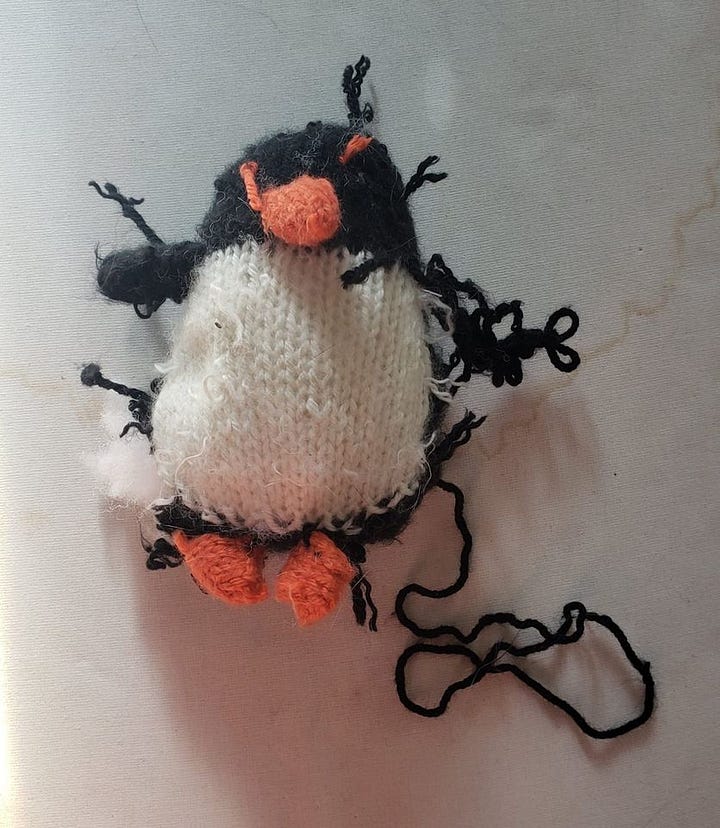
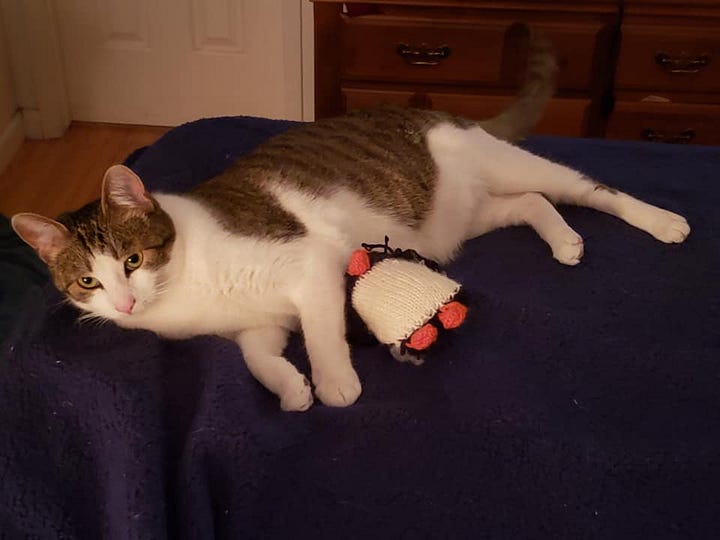
Yarn stores earned over $12B (billion!!) in 2022. Most of these stores are small, owner-operated businesses, but they are remarkably robust because of customer loyalty. Whether it's a yarn crawl of regional stores or a knitting circle, knitters have kept vendors in business even through the pandemic.
When our store locked down, we purchased gift cards or yarn at the door. We met in the park, sitting six feet apart, enjoying each other's company in the fresh air and sunshine. Other knitters joined the storeowner, using Zoom. This included knitters who lived in distant rural towns. That's quite a client reach for a small yarn shop. They say liquor and lipstick are recession proof, but yarn is tradition.
A friend of ours painted a charming portrait of elderly Greek women sitting in a village street, knitting and gossiping. One woman is aghast at something another said, her ball of yarn rolling off her lap. It is one of my regrets that I didn't buy that painting. It shows the age-old need to sit and discuss the neighborhood shenanigans while producing a garment.
While our circle has banned politics, we share movies we've binge-watched, favorite eateries around town, family dynamics, and, of course, the perennial subject of people of a certain age: medical issues. That's when we become a support group.
In the 60s, home ec classes taught knitting, crocheting, and embroidery. Perhaps this was to carry tradition foward. Women still provided warm clothing for their families using these skills back then. Stitching a sampler developed patience as well as teaching letters, numbers, and a favorite quote.
My first time holding a pair of needles was at the feet of an old lady in my church. We were to knit a pair of slippers, using both knit and purl. An easy project, right? Seeing how the woman made those stitches was impossible from our places on the floor. The girl next to me said, "just knit into the stitch backwards." Okay. Of course it didn't work.
That led to frustration about this difference between knit and purl. At last, I asked my Aunt Verda, the family knitter, for help. She always had a pair of needles in her hands, making sweaters for everyone, including my lovely yellow cardigan with a Fair Isle yoke. Alas, I lost track of it once it landed in the big black trunk where hand-me-downs went to die.
While I looked over her shoulder, she showed what these stitches looked like so I could "read" the fabric. Voila! The clouds parted. From then on, I plied my new-found skill to numerous projects, enjoying the calming effect of knitting.
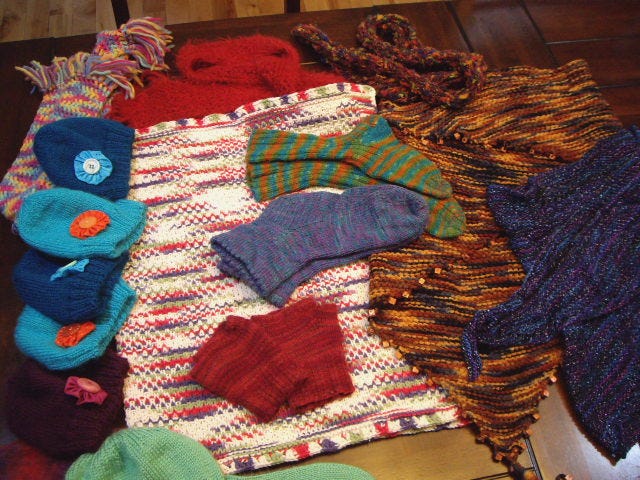
Recent studies found that knitting is good for mental health. People tend to live longer because of crafts. That theory bears out with Aunt Verda, who lived to be 101. Knitting challenges the mind as well as calms the soul. Of course, some might dispute this.
Occasionally, the ladies will grumble as they "tink" (knit spelled backwards) or "frog" stitches to redo a row or whole section. (Think of a frog's rip it rip it.) We remind ourselves there's no such thing as perfection. In fact, I aver proudly that it wouldn't be my work if I didn't screw it up somewhere.
One dear lady in our group dropped her hands in her lap and cried, "Why do we do this to ourselves?" I could feel her pain. Like her, I found the complex patterns confusing. I've given up many in despair, using the yarn for easier projects.
"Well," I drew a long breath to sort out the words. "We do it to make beautiful, warm things from luxurious materials." Apparently I nailed it.
"That's it, isn't it?" she said. "I just need to keep that in mind."
We're all pushing the edges and knitting is a good way to test one's patience. It keeps the mind nimble. It's heart-breaking to hear of an elderly woman who no longer can remember how to knit the stitch patterns she once mastered. I fight against that ultimate fate with every dropped stitch. Regardless of the joys and frustrations, I still pick up the sticks and bliss out. In fact, my fingers get itchy if I go for long periods without knitting.
So, this is our gift from that creative person who plucked a tuft of hair off a bush, teased it into filament, grabbed a couple of sticks, and formed a slip knot, casting on her first stitch.
I wonder what she made then?
Resources:
The origin of the Neolithic ball of yarn is sketchy, but it was first revealed here on Facebook.
Meanwhile, information about the Egyptian sock is here.
On March 31, Ring Around the Basin will be two years old. Just before Ring's first birthday, 100 readers subscribed … a surprising milestone. Thank you to all who encouraged me to stick with it through that first mind-bending, challenging year. I'd be thrilled if we could reach 200 by the end of March 2025. I really appreciate my readers, your comments and camaraderie. So, please consider tapping that Subscribe button.
If you enjoyed this post, feel free to explore other writings in the Ring Around the Basin Archive. I also love to read your comments, so please share your thoughts. Let’s start a conversation. And if you wish to support my writings, please consider subscribing or upgrading to a paid subscription. It’s now only $50/year. Even better, I would appreciate it if you could share Ring Around the Basin with your friends. Thank you!
All my books, Paradise Ridge, When the Horses Come and Go, and Ghost in the Forest are currently available on Kindle. Ghost in the Forest, is also available in paperback. Paradise Ridge is out-of-print, but the Kindle version is re-edited and better quality.
Book Review of Ghost in the Forest:
"Ghost in The Forest' is a great read! Take note People. If you love stories about environmentalism and nature, its clash with urban mindsets, as well as personal transformation, this is the book for you!
"Ghost in The Forest" is a quick 126-page read. It's the story of Dori, a woman trapped in a mix of grief over parental loss and refusing to accept how her hometown and her friends have changed over the years. Because of this, Dori has become a recluse and a self-imposed misanthrope who finds more comfort amongst the hiking trails around her hometown of Morristown than in her dealings with the raw reality of other humans.
The book, in some ways, resembled Edward Abbey’s “Desert Solitaire” in that the story follows a protagonist's love of nature and angst about humans encroaching on it. In this case, it’s how Morristown is transforming into a mountain biking destination where cyclists run rampant on trails and nature.
However, a tragedy involving said mountain biking becomes a major pivot point for Dori, leading to a series of events that eventually bring about personal evolution and discovery.
If you're a nature lover, this book is a must-read. It beautifully portrays the clash between environmentalism and urban mindsets and the journey of personal transformation. The book's vivid descriptions of nature and the protagonist's love for it will surely intrigue you.
Paradise Ridge Review by western author D. B. Jackson:
If you draw circle roughly around an area that includes northern Nevada, southern Oregon, and southern Idaho, within that circle exists a culture and people who live a lifestyle largely untouched by modern values. These are the "buckaroos" and Basque characters author Sue Cauhape brings to life in her literary novel, "Paradise Ridge".
Leandro, the illegitimate seventh son of patriarch Xavier Arriaga and his mistress, Gisela, is at the center of this intriguing story that travels exceedingly successfully at both the personal level of the characters, as well as the compelling level where the story is told.
Cauhape writes in a literary style that reminds me of Annie Poulx. Paradise Ridge, on the surface, appears to be an upscale Western novel...once inside the pages, you will soon discover a potential classic waiting to be discovered.
I rated this book a 5...because that's all the stars there were.





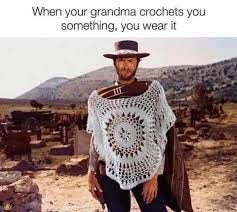



What a solid story, woven together with love and skill.
My goodness, that's quite the archive of beautiful lace. I'm going to bookmark that the peruse as time allows. And thank you for your kind remarks. Today, I cleaned out a couple of drawers and stacked about a dozen scarves, etc. that I thought I'd wear, but when I put them on now, they look like meh! So, off to the thrift shop they go. It may be a tad late in the season, but you know, winter seems to be starting in February this year and who knows if we'll get Miracle March. Ah, the Great Basin.